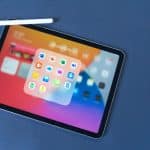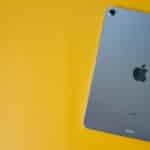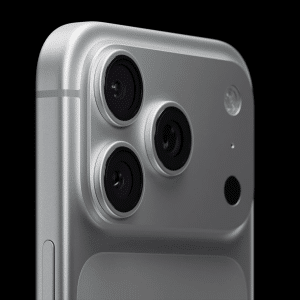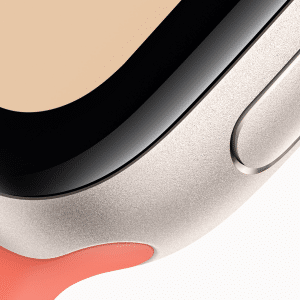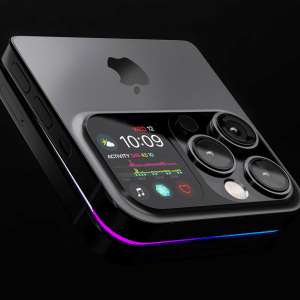Apple’s new iPad Air represents a refinement of the company’s tablet concept, not a revolution. But that doesn’t make it any less compelling.
You won’t find many new features on the Air, which replaces the more simply named “iPad” as Apple’s full-size flagship tablet. Nor does it work much differently from its predecessors.
What you will find, though, is a device that is much thinner, narrower and lighter than previous iPads and is thereby more enjoyable to use. It’s also, thanks to an updated processor, considerably faster, though that fact won’t be as readily apparent.
I just got the new Air on Friday, so I haven’t had time yet to thoroughly test it, but it makes a favorable first impression. I considered its predecessor the best full-size tablet on the market; the Air now seems to have wrested that title away.
The distinction between the Air and previous iPads is apparent before you even take it out of its box. The Air’s box is, like the device, narrower and shorter than that for the fourth-generation iPad that preceded it.
According to Apple, the Air is 20 percent thinner than its predecessor and about 1.5 centimeters narrower. Thanks to those changes, the new iPad weighs just a pound, down from 1.4 pounds previously.
The change is definitely noticeable _ and appreciated. The Air’s not as light as Apple’s iPad Mini, but it feels closer to that than it does to the older iPads, which could be unwieldy to hold with one hand and could tire your arm if you held them for a long period, such as when watching a movie.
The new Air, by contrast, is much easier on the arms and, because it’s lighter, more portable. I found myself holding it while I brushed my teeth, something that was much more difficult with the older iPad.
The Air, like its predecessors, has a metal case. So, even though it’s lighter, it still feels sturdy.
The other big change is its new chip. Apple has outfitted the Air with the same 64-bit A7 chip that debuted on its iPhone 5S smartphone. The new chip offers a big boost in power.
On the standard performance tests that I ran, the new Air vastly outperformed its predecessor _ and the vast majority of other smartphones and tablets.
The Air loaded “Infinity Blade 3,” a new and graphically rich game, about 10 seconds faster than did the fourth-generation iPad. It also was about 5 seconds or so faster in exporting a 20-second movie from iMovie to the device’s camera roll.
But if you’re not into high-end gaming or doing a lot of movie-making on your device, you probably won’t notice much of a difference in speed. The Air and its predecessor take about the same amount of time to launch their Mail, Web browser and Maps programs.
To be sure, you’ll probably appreciate the speed difference more down the road than now. Future upgrades to iOS are likely to require a 64-bit processor or will run much more slowly on older processors. And over time, developers will probably write more apps that take advantage of the A7’s power.
Other changes with the Air are less apparent than its chip. It has a new Wi-Fi radio that includes two antennas rather than just one. This is supposed to give it faster speeds and make it less susceptible to interference. I didn’t test the Wi-Fi antennas thoroughly, but didn’t notice much of a difference.
If you choose to get the version of the iPad that includes a cellular radio, you’ll find that the Air is able to access more LTE networks than before on more carriers.
More notable are the things Apple didn’t include and didn’t upgrade. Unlike the iPhone 5S, the Air doesn’t have a fingerprint sensor, which Apple calls Touch ID. So if you want to prevent other people from using your tablet, you’ll have to use a passcode instead of tapping your finger to it.
Compared with the Android and Windows tablets available, the iPad has one big shortcoming: It can’t be customized for multiple users. If you plan to share your tablet with your wife or child, they’ll have access to everything you have access to _ unless you turn on its customized feature restrictions every time you hand over the device.
The Air has the same basic cameras as its predecessor _ a 1.2-megapixel one in front and a 5-megapixel one in back. It would have been nice if Apple had upgraded those, given how many people are using their tablets as cameras. But it’s not a deal-breaker that it didn’t.
Similarly, the Air has the same high-resolution Retina display as its predecessor. It’s not as high-resolution as some of its competitors, but it’s a great screen and you probably won’t be able to tell the difference.
All told, the changes Apple made to the iPad to create the Air may not sound like much. But all you have to do is pick one up to appreciate the difference.
San Jose Mercury News (CA)
(c)2013 San Jose Mercury News (San Jose, Calif.)


